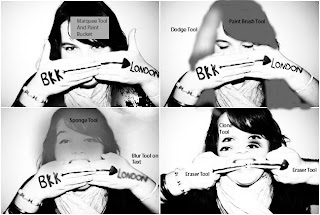Over the past few weeks I have conducted my very own interview with a close friend who is aspiring to be an artist, not only does she succeed in writing and acoustically rehersing her own songs, she also does feature copies of previously recorded songs. I have chosen to conduct an interview with her because I felt it was important to get a feel for how I would like my final interview featured on my double page spread to turn out. Although this was extremely helpful in my research stage it was only a brief and general interview.
Here is a mock-up of the interview;
Amy-Leigh is living a life only few could dream of. Aspiring to be a successful artist she has broadened her music around the local area and it is only a matter of months before her music is heard and engaged with by the founders of music lovers. As we take a step closer to into her thinking behind her personal songs she reveals the longing she's been needing to release about all her hard efforts, will they finally pay off?
Amy, your aiming for the indie-chic look today, is fashion something that's important to you?
Always, I find myself browsing all the time! I've always been a sucker for delving into 'vogue' but I am human, I love wearing joggers and a baggy t-shirt!
Don't we all! Do you think the media puts too much pressure on us to have a slimming figure?
Yes, whever you look there's always promotions for diets and healthy eating choices, whatever happened to ten being a size?
We agree. Do you believe more in the music than the image your providing?
I've grown up with music in my life for over twenty years, its the music that counts, a lyric can be so emotive and creative, something that your fans can connect with and I think if your fans understand your music then they'll accept you without thinking about it.
You've been sharing your music for more than seven years now, are you prepared to alter your style and play around with different sounds?
I'm always looking for a challenge and one that is difficult to overcome is what excites me about this industry.
You haven't yet been signed to a major label, do you not think changing your sound will alter your fan base?
It's a difficult thing to decide. My fans are my fans because they love the music I write, it has a meaning and comes from personal experiences, but I think most would be accepting of what I have to offer! (laughs)
We'll always be listening! Is your music always related to personal issues?
Mostly, they come from the broken hearts and the issues with love.
Have you had your heart broken recently?
There's a be a few in my time...(laughs)
The interview above was a small 'snapshot' of the overall interview I did with Amy-Leigh. I chose that part of the interview because I felt it educated the readers about her music with minor detail on her herself and also kept the answers quite light hearted in order for the reader to enjoy what they are reading for entertainment purposes. When thinking about my final interview in my magazine I will look to add more detail, make the questions fit the audience and the aim as well as using entertainment features. However this interview was only used for research purposes, and I believe it will help me get a better understanding when it comes to my final coursework.





































